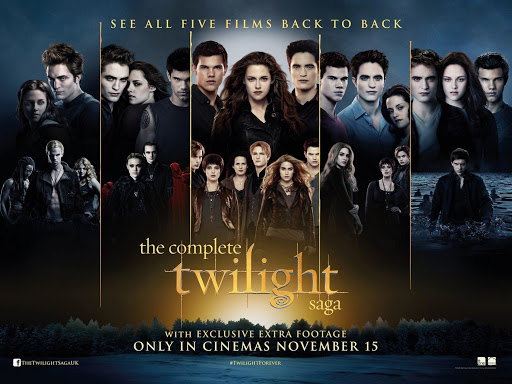Experiencing the ‘Twilight’ saga as a college student

Staff writer for The Campus Chronicle Alyssa Pittari recently read and watched the “Twilight” saga for the first time. While she finds the franchise entertaining, she doesn’t believe it’s a well-written story. Image retrieved from The Viewer’s Commentary
By Alyssa Pittari
Staff Writer
Over 10 years ago, when most other tween and teenage girls were fawning over the “Twilight” Saga, I was simply disinterested. At that time, if someone were to ask me if I was “Team Edward” or “Team Jacob,” I would say that I had no opinion.
Recently, I decided to watch the first three movies. I had absolutely no expectations for the films. While the movies were generally enjoyable, I couldn’t help but be confused about the intricacies of the plot. There were many rules left unexplained, and there were plot holes that detracted from my viewing experience. I was already over halfway through the movie franchise, but I decided that I needed to read the books to get the true “Twilight” saga experience. Unfortunately, I found the books to not be much better than the movies.
The first thing I noticed about the books is that they are extremely long, and after reading them, it’s obvious that there is no reason for that. The main problem I have with most of the books is that there is no real plot until the last quarter of the story. Once a plot is finally introduced, it is extremely underwhelming. For example, most of “New Moon,” the series’ second installment, is spent focusing on main character Bella Swan sulking because her love interest, Edward Cullen, left her. It isn’t until the very end of the story that Swan is reunited with Cullen and a central conflict is introduced.
Author Stephanie Meyer spends too much time in the exposition stage of the story, especially considering how underdeveloped the characters are. Swan’s only traits are that she is clumsy and has brown eyes. Readers may think that throughout the series the characters and the plot become more developed, but they’re wrong.
For me, the most irritating character was Jacob Black. As Black spends more time with Swan, he develops romantic feelings for her. The feelings appear to be one-sided until Swan admits that she loves him but not as much as she loves Cullen. The cliché love triangle trope was one of the aspects I enjoyed, but as that plot progressed it became obvious how much of a jerk Black is. His only motivation is to persuade Swan to fall in love with him, and because he does not succeed in that, he believes that he has suffered a great injustice. He believes that just because he is a “nice guy,” he deserves to be with Swan.
In addition to the lack of real plots, there are never any consequences that the characters must face for their mistakes. Because Meyer does not give readers the chance to deeply connect with her characters, I struggled to care about their wellbeing when any of them were faced with danger.
Cullen breaks many vampire rules by revealing himself to Swan and falling in love with her, yet he remains unscathed throughout the series. In “Breaking Dawn Part 1,” when Swan gives birth to a half-vampire, half-human child named Renesmee, I finally believed that the characters would face consequences for breaking the rules established by the Volturi, the governing vampire body. When the Volturi arrive and want to kill Renesmee, a fight begins, and two main characters are killed.
However, this fight sequence is revealed to only be one of Alice Cullen’s visions. Alice is Edward’s adopted sister in their family of vampires, and premonitions are her special ability, as different vampires tend to have varying abilities and strengths. Because any action or decision can change the future, her vision is also fragile, and his future could change depends on what the Volturi decides to do about Renesmee. Therefore, in reality, these characters are still alive. The series is wrapped up in a neat little bow with everyone untouched.
Swan and Cullen may have lived happily ever after, but Meyer somehow found the need to release a fifth book in the series, “Midnight Sun.” Readers might have thought they were getting a new story. Instead, it is simply the first book retold from Cullen’s point of view. This was Meyer’s chance to add more detail to the story and further develop Cullen’s character, but I found it to be underwhelming. While the writing was slightly improved, I think Meyer failed to redeem herself by creating more plot holes and elaborating on insignificant details.
Experiencing the “Twilight” saga as a college-aged student has allowed me to fully develop an opinion about the franchise. While I found the series entertaining, it is not a well-written story. I don’t regret reading the books and watching the movies, even though they are not good examples of storytelling. However, it is hard to ignore the impact the “Twilight” saga had on the literary world and society as a whole. The saga will continue to be a well-known franchise appreciated by many.